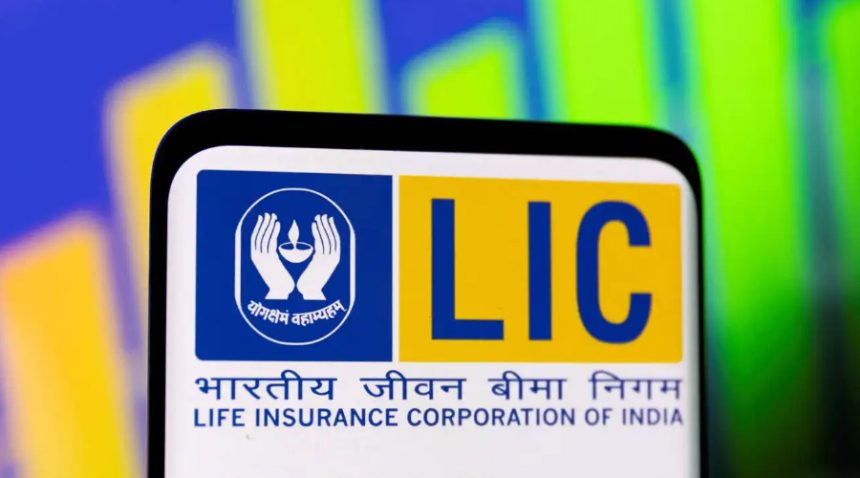LIC shares dip as plans unfold to offload 6.5% stake via OFS
The Government of India is preparing to sell a small part of its stake in the Life Insurance Corporation of India (LIC). This decision is part of a long-term plan to meet stock market rules and to raise funds for public spending. LIC is India’s largest insurance company and one of the biggest public sector undertakings (PSUs). This move is likely to have an impact on LIC’s stock price, government revenues, and investor sentiment.
LIC’s Background and Current Position
LIC is the biggest life insurance company in India. It has over 290 million policyholders, a vast network of agents, and total assets worth more than ₹50 lakh crore. The company is a key player in the Indian financial sector, and its operations span across life insurance, pension plans, and investment management.
LIC was listed on the stock exchange in May 2022. In its initial public offering (IPO), the government sold 3.5% of its stake and raised around ₹21,000 crore. This was one of the largest IPOs in India. Even after the IPO, the government still owns about 96.5% of LIC.
Why the Government Wants to Sell More Shares
To Meet SEBI Rules
According to rules set by the Securities and Exchange Board of India (SEBI), every listed company must have at least 10% public shareholding. LIC currently has only 3.5% of its shares with the public. This means the government must sell another 6.5% by May 2027. This requirement is one of the main reasons behind the decision to sell more shares in LIC.
To Raise Money for the Government
By selling part of its stake, the government can raise money without borrowing more or increasing taxes. The funds raised from this sale can be used for infrastructure, rural development, health, or other important projects. It can also help reduce the fiscal deficit, which is the gap between government income and spending.
To Improve Market Participation
Selling more shares will increase LIC’s public float. This means more shares will be available in the market, which could attract new investors. It will also improve trading volumes and make the stock more attractive to mutual funds, foreign investors, and retail participants.
How the Sale Will Happen
The Department of Investment and Public Asset Management (DIPAM) is in charge of planning and managing government disinvestment. DIPAM is currently working on the details of the sale.
The method chosen for this sale is called an Offer for Sale (OFS). In an OFS, shares are sold through the stock exchange at a fixed price or with a discount. Both institutional investors and retail investors can participate.
The exact timing, size, and price of the offer will depend on market conditions. The government is expected to sell the shares in small parts over time to avoid any sudden impact on the stock price.
LIC’s Performance and Market Position
LIC continues to maintain its dominance in the insurance sector. In June 2025, LIC collected around ₹5,313 crore in individual premiums, which is a 14.6% increase compared to the same period last year. This shows that LIC is growing faster than many private insurance companies.
However, the group premium collection sees a 7% decline. Even so, LIC remains ahead of competitors in terms of total premiums collected and overall market share.
As of July 2025, LIC’s market capitalization is close to ₹5.85 lakh crore. The stock trades around ₹925. On the day the news of the government stake sale is announced, the stock falls by nearly 2%. This shows that investors are cautious about the impact of more shares being available in the market.
What Happens Next
Several steps are expected in the coming months:
Final Plan Announcement
DIPAM will observe market trends and decide the best time for the stake sale. The goal is to find a balance between raising funds and avoiding too much pressure on LIC’s stock price.
Offer for Sale (OFS) Launch
Once the date is set, the OFS will be launched. Shares will be offered at a price slightly lower than the current market price to attract investors. The sale may be done in phases.
Share Price Movement
In the short term, LIC’s share price may remain under pressure due to increased supply. However, if the company continues to post good business results, investor confidence could return.
Use of Funds
The money raised will likely be used for public spending. This can include building roads, bridges, digital infrastructure, and social welfare schemes.
What This Means for Different Stakeholders
For Investors
This sale gives retail investors another chance to own shares in India’s largest insurance company. If LIC continues to show strong growth, the stock may offer long-term value. Increased public ownership may also lead to better transparency and governance.
For LIC
As more shares are sold to the public, LIC may face greater scrutiny. This could push the company to improve its operations and financial performance. A broader investor base can also bring more attention to LIC’s strategies and quarterly results.
For the Government
This stake sale helps the government meet SEBI’s rules and improves its financial position. It also shows the government’s commitment to reducing its role in running large corporations and promoting wider public ownership.
Possible Challenges and Risks
While the plan has several benefits, there are also some risks:
Market Volatility: If global or domestic markets are weak, the OFS could see lower demand, leading to a fall in share prices.
Investor Appetite: If too many PSUs come to the market at once, investor interest could be diluted.
Valuation Concerns: If the offer price is not attractive, investors may stay away, leading to under-subscription.
To reduce these risks, the timing of the sale is very important. Selling shares when the market is stable and when LIC’s business outlook is strong can improve results.
Long-Term Outlook
Over time, a successful stake sale could increase LIC’s trading volumes and market visibility. The company’s strong brand, customer base, and investment capacity make it a solid long-term bet for investors.
The government is also planning to reduce its stake in other public sector companies. If the LIC sale is managed well, it can serve as a model for future disinvestments.
Final Thoughts
The government’s decision to sell a minority stake in LIC is a major step toward meeting regulatory requirements and strengthening public finances. The move will also increase investor participation in one of India’s most trusted brands.
The success of this sale depends on careful planning, market timing, and investor response. If done correctly, it can benefit the company, the government, and the Indian stock market as a whole.
LIC remains a key part of India’s financial system. This strategic sale could mark the next big chapter in its journey as a more widely held and closely watched listed company.





